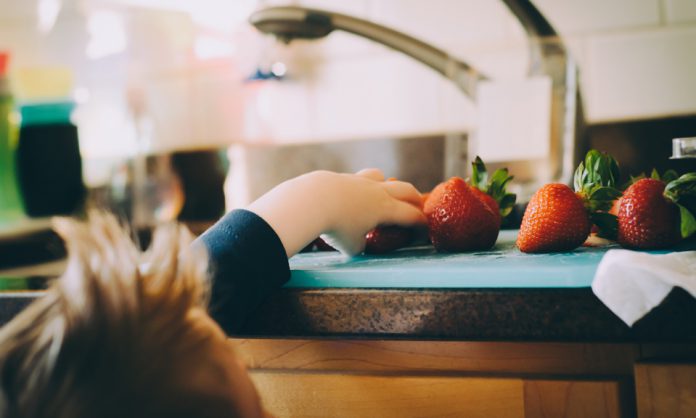From the hundreds of articles on parenting I have read, probably one of the most useful bits of information that I found most handy is the One Bite practice, which gradually teaches kids to be, well, more well-rounded eaters (thank you Reader’s Digest). I love vegetables and I can’t help but feel just the teeniest bit sorry for people who don’t like them at all. They seem to be missing a lot – we all know that veggies are good for the body and they give a unique, natural flavor to our favorite dishes. Naturally, I want my kids eating vegetables too and so far, I am satisfied that no blood and tears are shed whenever vegetables are served during dinnertime.
My seven-year-old loves eating vegetables and I rather see it as a kind of achievement (her dad isn’t much of a fan, sadly; though he eats in moderation). She likes pechay, sayote, potatoes, carrots, kangkong, kamote, and even eats less kid-popular choices like garlic, radish, papaya, and onions. There are still some foods that she does not like much so we still apply the one-bite rule at the table today. Nonetheless, the method is quite effective with me and I’m sure it will work for you and your kids, too.
The concept is easy. You just ask (never force!) your child to take one bite of any food he or she would otherwise ignore. If for example the food served consists of different types of vegetables, I ask my daughter to take one bite of every kind of vegetable there is. After several tries, she now likes – even loves – most of them. If she really detests the food and refuses to take even one bite, we don’t push it. Next time I cook the same food, I keep “suggesting” she try one bite, and so on, until she eventually gives in. If she wants to, we allow her to drink water right away after tasting. In any case, everyone’s happy!
Children develop a taste for specific foods over multiple exposure (try about 15 times). Experts say that seeing the food on their plate and seeing the people they eat with eating that particular food is also a form of exposure and would likely result in kids eating vegetables. The one-bite rule should be applied with gentleness and understanding, of course. If parents make the mistake of “forcing” kids to taste or eat vegetables, children will develop greater tendency to be picky eaters or worse, view eating as a generally stressful activity.
Feeding children can be a bit tricky. You need to be creative, plan, and in some cases such as obesity, consider dieting options. Furthermore, you need to be a healthy eater yourself and be a good example. Kids not eating vegetables will no longer be a cause for worry if you try the One Bite practice. It is simpler and surely makes more sense than “disguising” veggies before including them into your kids’ food (i.e. vegetable purees). Tell us if you’ve tried the one-bite method in feeding children and whether you are happy with the results too.
Blog: Momnotes Philppines





